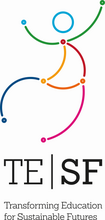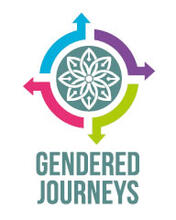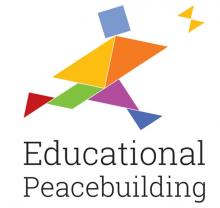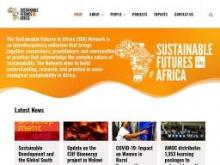The 5th Adult Education and Development Conference (AEDC) organized by DVV International with support of its partners, held on 11-12 October, 2017, dealt with policies, roles, functions, governance, impact and benefits of adult education and community learning centres as important institutions and structures to foster local development. Here is a report and key messages arising from the conference:

11-12 October 2017, Tbilisi, Georgia
“Adult Education Centres as Key to Development - Responsibilities, Structures and Benefits”
Report and Key Messages
Community-based approaches, learning spaces and centres are part and parcel of international policy agendas such as CONFINTEA and the Sustainable Development Goals (SDG). They are prominently featured in the UNESCO Recommendation on Adult Learning and Education (RALE). Education for Sustainable Development (ESD) and Global Citizenship Education (GCED) are instrumental for the future of our planet, and their implementation requires an institutional basis at the local level. Institutions for education and training of youth and adults in the community are indispensable for managing social transformation towards the establishment of a learning society.
This 5th Adult Education and Development Conference (AEDC) organized by DVV International with support of its partners dealt with policies, roles, functions, governance, impact and benefits of adult education and community learning centres as important institutions and structures to foster local development. They are flexible, respond to changing needs and new demands of individuals and society in the era of globalization, digitalization, migration, demographic changes and technological development. While focusing on similarities, the global and regional perspectives and experiences that were shared provided a substantial variety of examples. Such diversity of approaches was appreciated with a view to their different contexts and purposes, historically and culturally.
The diversity of institutions is represented in the different names that are used. This was considered by participants as both an asset and a challenge. Adult education centres have as their main target group adults, but they are not excluding young people or children. The aspect of education does not minimize the importance of other forms of learning, such as non-formal or informal. Even the infrastructural set-up of institutions varied widely in respect to governance mechanisms, size, staffing, civil and community engagement. To reflect this diversity, the Key Messages explicitly make use of the combined wording of Adult Education Centres/Community Learning Centres (AEC/CLC).
Key Messages
In the preparatory process and during the Conference, a number of issues arose which should be taken forward to strengthen the system and structures of AEC/CLC, as well as to expand and improve their programmes and activities towards lifelong learning. It was noted and discussed that local centres need service and support structures on provincial, national, regional and global levels for exchange and cooperation, professionalization and financial sustainability. The existing associations, networks, platforms and umbrella organisations perform important roles and functionsin relation to advocacy for quality adult education, whether as formal or non-formal provision, as well as for the recognition of all prior and continuing education, training and learning.
Participants and stakeholders agreed on a set of Key Messages that were developed with the involvement of the global network of DVV International, and validated and refined in the course of the Conference. They are structures according to the three interlinked thematic blocks of the Conference and meant to enhance the status, provision and impact of AEC/CLC. They focus on strengths, challenges, requirements, and recommendations. However, they may be further refined and adapted to even better serve local purposes and learning needs across the globe.
To this end, the 5th AEDC agreed on the following Key Messages:
- Public Responsibility in Adult and Youth Education
- Education and lifelong learning as a human right: The right to education is enshrined as a universal human right. In our age of globalization, digitalization, migration, demographic and technological changes, public support to education and learning throughout life is a must.
- Common good and public responsibility: AEC/CLC are institutions providing education and lifelong learning for all, leaving no-one behind. They allow for equitable, quality and inclusive education through access for people in poverty-stricken areas and for all marginalized groups.
- Community anchoring and public mission: AEC/CLC should be embedded in the community to become key institutions on the local level providing adult education and lifelong learning opportunities for youth and adults, and thereby contribute to community development.
- Policy, legislation, and financing: For AEC/CLC to function well, similar legal provision, governance and support structures as those available for schools, vocational training and higher education are needed. Funding should be adequate, predictable and sustainable.
- Inclusion and diversity: AEC/CLC provide opportunities for all, regardless of class, gender, education, age, religion, ideology or nationality. They accept and appreciate multiple forms of diversity and use education to act against any sort of discrimination and stigmatization.
- International discourse and commitments: International policy discourse and governmental agreements emphasize lifelong learning as a paradigm for future education systems, and assigns increasing importance to setting-up of institutional structures at the local level.
- Development partners should recognize the potential of AEC/CLC and fund them. Global partnerships, donors and other influential actors should invest much more in this sector and hold governments accountable for supporting the whole lifelong learning agenda.
- Roles and functions: AEC/CLC are multifunctional and innovative institutions. They cater for education and training, community information, counselling to learners and potential participants, act as social and cultural meeting places, and centres for arts and exhibitions.
- Public private partnership: Adult education is a public responsibility; however, cooperation between AEC/CLC and the private sector can be expanded on matters of funding support as well as provision of labour market-oriented training and as a tool for enhancing employability.
-
AEC/CLC as Important Structures
- Ownership and accountability: AEC/CLC should be institutions primarily owned and run by communities. Communities should involve themselves through accountability structures, such as boards and committees that meet regularly and play an oversight and monitoring role.
- Expanded learning environments: Digitalization forces fundamental changes in education and learning. New digital avenues combined with institutional back-up, convenient meeting places and pathways of blended learning are means and tools which AEC/CLC can provide.
- Formal, non-formal and informal: AEC/CLC build on prior learning and bridge sub-sectors, thus help to compensate for deficiencies and gaps. They develop their full potential when mechanisms for recognition, validation, and accreditation exist or are continuously developed.
- General, specific, flexible: AEC/CLC provide a variety of relevant educational opportunities allowing for flexible and quick responses to societal needs. They range from basic education, literacy and foreign languages to income generating activities, vocational training and life skills.
- Learning and teaching: While communities know best what their challenges and requirements are, they often need support translating these into curricula, programs and materials. Hence, learner-friendly approaches and participatory assessments play a crucial role.
- Professional support: Governmental stakeholders and academic institutions should support sustainability and professionalization of AEC/CLC through training, organizational development, research, funding, M&E frameworks and regulations that can be managed by the community.
- Human resources and capacity building: AEC/CLC depend on qualified, well trained full- and part-time staff, and the engagement of volunteers for administration and teaching. Pre- and in- service training, including e-learning, should be given highest priority.
- Cooperation and networking: AEC/CLC run by civil society or private organizations should set-up umbrella bodies such as associations for joint awareness raising, lobbying and advocacy, networking and fundraising to respond to expanded learning needs.
- Age and demography: Children and youth should have the best quality education possible. However, adults make up the largest group in society, and adulthood is the longest period during life. AEC/CLC provide competencies, knowledge and skills for adults, even in later life.
- Benefits and Wider Impact of AEC/CLC
- Multifunctional purpose: AEC/CLC are filling gaps that are inherent in formal education systems. Moreover, they provide a broad set of complementary learning opportunities to foster personal development and promote knowledge-based societies, and to tackle global challenges.
- Migration and integration: AEC/CLC can operate as local hubs for managing integration; they support the social and economic integration of refugees and internally displaced people, migrants and returnees, thus help to ensure the right to education for all, including in migration.
- AEC/CLCs provide services that offer skills and alternatives for youth and adults to create a sustainable livelihood in rural and urban settings. Such services of training and follow-up support may assist in counteracting the rural-urban drift or migration to other countries.
- Poverty reduction and local development: AEC/CLC can offer integrated learning approaches combining literacy with skills training and can thus be important drivers of economic development from below for farmers, workers, self-employed people and cooperatives.
- Cross- and inter-sectoral: Next to education, AEC/CLC have significant impacts on other development sectors. Activities can contribute to improved health and well-being, gender equality, reducing inequality, conflict prevention and promotion of peace.
- Achievements and benefits: Much more research is needed on AEC/CLC to produce robust data and provide evidence on the real accomplishments of adult education within lifelong learning, highlighting the wider benefits for individuals, communities and society in general.
- Indicators and impact: Monitoring of achievements of AEC/CLC should cover the centres themselves (infrastructure, funding, resources and staff), the relevance of programs and activities performed, participation and drop-out rates, wider benefits and long-term impacts.
- Citizenship, empowerment, sustainability: AEC/CLC build the backbone for access and participation of adults in learning, promoting democratic values through empowerment, and active citizenship for sustainable development, and thus engage with ESD and GCED.
- Education Agenda 2030 and the SDGs: Inclusive, equitable, quality education and lifelong learning are at the heart of the attitudes, values, knowledge, competencies, and skills needed for sustainable development. AEC/CLC act as local hubs to promote and implement the SDGs.
The Way Ahead
These Key Messages are put forward for further attention and discussion by decision makers, practitioners, stakeholders, and donors at national and international policy levels. They are intended to provide guidance and support advocacy. The next opportunity for this will be the CONFINTEA VI Midterm Review in Suwon, also in October 2017.
Participants and stakeholders agreed to support dissemination of this Report and its Key Messages in a variety of forms by using their own websites, newsletters, journals, and other channels. Appropriate ways and means will be employed to inform national governments, regional and global intergovernmental organizations, donors and funding agencies, as well as civil society, academia and the private sector. DVV International will strengthen this debate through its regional offices and its network around the globe. Together with their partners, they will search for opportunities to deepen the understanding of the diversity of AEC/CLC. Particular attention will be paid to the potential of expanded learning environments as a valuable approach to increase the outreach to young and adult learners.
DVV International foresees that in 2019 a follow-up conference may look at the achievements and future needs of AEC/CLC, while at the same time marking the occasion with celebrations for “100 years of VHS” and “50 years of DVV International”.
Best Sneakers | Nike - Shoes & Sportswear Clothing
- Log in to post comments













Latest Comments